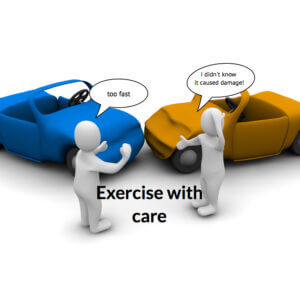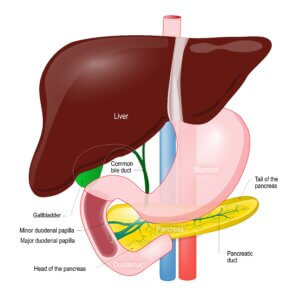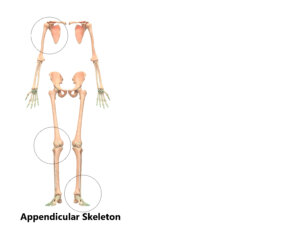Putting Age into Perspective
Author and former podiatric surgeon David Tollafield delves into how feet deteriorate over time. He considers the problems in light of his experience as a patient and clinician.
Highlighted words in blue provide further links to articles by the author on the Consultingfootpain site
Are we a car crash away…
 Like all moving parts, our body, a wonder of mechanics, suffers from degeneration. Sometimes this degeneration is so slow that it comes as a shock. ‘I smile at people who say this getting old thing is not nice,’ – and who’s to disagree? I found that in my late fifties and early sixties, many body parts went to pieces. Here is one of my favourite websites from which I quote –
Like all moving parts, our body, a wonder of mechanics, suffers from degeneration. Sometimes this degeneration is so slow that it comes as a shock. ‘I smile at people who say this getting old thing is not nice,’ – and who’s to disagree? I found that in my late fifties and early sixties, many body parts went to pieces. Here is one of my favourite websites from which I quote –
“Some theories claim that ageing is caused by injuries from ultraviolet light over time, wear and tear on the body, or byproducts of metabolism. Other theories view ageing as a predetermined process controlled by genes. No single process can explain all the changes of ageing.” Medline
We are made from interactive organs and a skeleton combined with a blood and nerve supply controlled by the brain. There are no anatomical parts which fail to display a lack of weakening. Some do better than others. Sitting in a place from which to observe my fellow man, I see all types of movement. Children running around with a complete lack of pain or concern for weakened muscles slowing pace, lack of breath, or poor reflexes are the perfect example of how we see ourselves years later. The foot is an organ of the body as it comes in a complete package controlled but all the above organs. However, it is a functional part of the anatomy, which means it moves, has to take load and reflects medical diseases.
Age is determined by time, the body’s reaction to injury or the effects of substances and drugs. Those drugs I mention are not recreational but are intended to ease life. An active life wearing shoes will cause wear and tear. Look how the uppers and sole wear, then think and marvel at how the foot masters all those insults when directed at body tissues.
The Skin and Keratin
The largest organ in the body is the skin. The nails and skin are derived from skin cells that form a harder outside called keratin. This is a cellular protein. For the average adult human, the skin has a surface area of 1.5–2.0 square metres (16–22 sq ft). Wikipedia. My feet at size 7.5 UK, equates to around 0.070 square metres of skin. Nails and skin deteriorate exponentially, although less so than the face exposed to UV light most of the day.

Click on the link to enlarge. https://consultingfootpain.co.uk/wp-content/uploads/2023/10/nail-matrix-scaled.jpeg
The first part of the foot to age is often the fifth toenail. Ridiculous as this seems, the nail is exposed to pressure when footwear is not correctly fitted or changed for a larger shoe. The sensitivity to pressure at the growing point leaves the nail thick. Premature aging! The figure shown above can be enlarged to see the area marked by the black arrow called the matrix. Although the nail may recover, repetitive pressure eventually causes thickening. Rams horn nails are impressive in their unsightly appearance – the link to my own case history shows how easy this is to achieve wearing the wrong footwear for the wrong activity.
Skin shows signs of change. Elasticity diminishes as we age, stiffness within the skin’s structure loses water and fat, and the small epithelial cells responsible for growth can change with pressure. While some callus is considered a normal physiological response, deeper furrows are due to poor skin design, where layers form unevenly, bringing nerves and capillaries close to the surface.
Organ Failure – pancreas and kidneys
Diabetes is a common Western disease that is both genetic and influenced by lifestyle. Podiatrists and healthcare experts are concerned about diabetes and the foot because the small nerves reduce their sensitivity if the disease is uncontrolled. This leads to poor nerve and blood vessel function. The link between the pancreas organ and the blood sugar-insulin relationship is critical to avoid multi-organ disease. The pancreas is shown in yellow and is part of the digestive regulation process.
Ulcers under the foot arise with damage and wounds failing to heal at the skin level. Painful calluses and corns arise because the skin has not adapted to pressure evenly. The study of urine can help us understand the presence of disease. My article for consultingfootpain on urine and its secrets can be viewed using the link in blue. Diabetes commonly affects the kidneys.

Gallbladder duct. Anatomy of the pancreas, liver, duodenum and stomach.
Circulation
The heart drives the blood around vessels, and high cholesterol risks shutting down flow because the cross-sectional aperture of the vessel affects the lower limb more than other parts of the main circulation system. Smoking is one of the worst adverse factors that affect blood vessels, so if you have high cholesterol and smoke, when your muscles demand more energy and oxygen, they are disadvantaged. The lungs start to respond poorly after 15-20 years of smoking when started young. Adolescents do not feel the effect as the small gas-exchanging sacs, called alveoli, cope for some time. The heavier smoker will advance faster, and the skin shows the effects—loss of elasticity, dryness, colour changes and risk of damage. Again, we must recognise that diabetes impacts circulation, especially when smaller vessels become blocked.

Healthy and atherosclerosis vessels with blood cells
Of course, we may never suffer organ disease, but the musculoskeletal system deteriorates nonetheless. This means bones, joints, cartilage and tendons.
Musculoskeletal
 The first cause of our body being affected later in life is the fact we over-exercise. Naturally, I am cautious as I write this because I strongly believe in exercise and pushing the body. Specifically, I am talking about injury – whether this is overdoing it or colliding with a team player during a game of contact sport. I managed both – a recurring knee problem from rugby (age 24) with multiple surgeries up to age 53, a pinched foot nerve surgery (54), back pain (60) and a ruptured rotator cuff (age 65). These all follow the MSK system.
The first cause of our body being affected later in life is the fact we over-exercise. Naturally, I am cautious as I write this because I strongly believe in exercise and pushing the body. Specifically, I am talking about injury – whether this is overdoing it or colliding with a team player during a game of contact sport. I managed both – a recurring knee problem from rugby (age 24) with multiple surgeries up to age 53, a pinched foot nerve surgery (54), back pain (60) and a ruptured rotator cuff (age 65). These all follow the MSK system.
Joints become unstable as ligaments are stressed and torn. The knee is a good example, while the ankle also suffers from ankle sprains and fractures. Joints that fail to recover and realign might be compared to a car wheel with a worn-out bearing. The extra weight we call load creates uneven wear. The lining of joints becomes inflamed. Arthritis is a rather general term, but joint problems that cause injury will bleed and scar inside, causing the cartilage to perform poorly as it relies on fluid mechanics. If your car’s engine had no oil, the cylinders would seize and no longer move, damaging the engine. Cartilage dries out if inflamed and cracks, losing its effective ability to take the pressure and stress of daily use. The big toe is seen as a deformity in some 50% of the population. The cause of this deformity is not footwear alone, but the toe bending can deteriorate over the years. This is called hallux valgus.
Hammer toes are toes that stay bent. The sticking-up element rubs. Toe deformities tend to become more troublesome with age, and some of the causes are due to foot shape changes and tendon balancing alters. The flexor tendons (under the toes) are more powerful than the extensors on top and override the equal pull. The joint bends at one of three points and then stiffens. As a podiatrist, it was rare to see dislocated toes in young people, but again, given time, problems that were not addressed were fitted into poorly selected shoes. Those shoes added to many a foot problem.
Shape change
There is no doubt our bodies change with time. Firm bits hang loose further up the body, but the foot widens and can flatten on the inside. Ligaments that support joints are looser, and weight gain adds to the pressure from above acting through the ankle. If you are unlucky enough to damage your foot, the joints may dry out, which can happen in the middle of the foot. I remain surprised that even medical doctors are unaware of the midfoot strain due to these small joints being inflamed. Again, this progresses with age, and yet it can be helped. The foot lump may be a sign of change, but it is not always present.
The big tendons of the foot don’t include the achilles tendon alone, but the supporting tendons that pull around the ankle. These stretch strain and pain in and around the ankle needs early intervention to prevent escalation. Posterior tendon dysfunction is perhaps the most common reason people have a painful foot flattening. There are other reasons and flat foot is a big subject and can be read following the link.
Can we get through life without having foot problems?
The answer is yes, but the factors that cause feet to age prematurely can be summarised. It is up to us to ensure they stay healthy. Even as a specialist in foot health, I have fallen foul of foot problems, but in terms of my health, the larger joints give rise to concerns in my case.
Factors to be aware of
- Occupational footwear trends that cause damage. These include safety shoes badly fitted.
- Hobbies leading to foot injury, including sports. eg rupture of tendons, skin lacerations with bare feet.
- Infections of the skin under the foot that scar or have foreign bodies.
- Failure of nerves to recognise pain, e.g. neuropathy. Diabetes, ulcers, poor healing.
- Smoking affects foot circulation again, causing poor healing and ulcers.
- Swellings that are unattended lead to toe deformity – bunions, ganglions, hammer toes.
- Arthritis, including gout, psoriasis, and rheumatoid arthritis.
- Weight gain and poor general health cause strain of the fascia under the arch and heel pain.
- Skin exposure to UV light, burns and skin damage, including cancers.
- Pressure build-up, forming painful callus and corns.
These are generalisations in each case above but illustrate that most problems can be recognised and dealt with.
Thank you for reading The Ageing Foot by David R Tollafield, written for ConsultingFootPain and published by Busypencilcase Communications
Released January 2024

You can read more from David Tollafield on Amazon (books) or go to bookshop.

Recent Comments